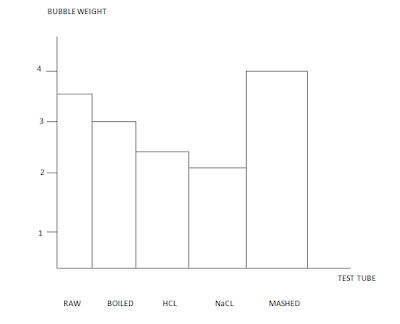La llet conté vitamines (tiamina, riboflavina, àcid pantotènic i vitamines A, D i K), minerals (calci, potassi, sodi, fòsfor i metalls en petites quantitats), proeïnes, glúcids i lípids. Els únics elements importants que no te són ferro i vitamina C.
Pràctica: identificar tots aquests components (resum de totes les proves d'identificació)
1- Determinació de la caseïna:
La caseïna és una proteïna conjugada del tipus fosfoproteïna que se separa de la llet per acidificació i forma una massa blanca. Les fosfoproteïnes són un grup de proteïnes que es troben químicament unides a àcid fosfòric, en el cas de la caseïna aquests grups fòsfor es troben units als aminoàcids serina i treonina. La caseïna representa entre 77 i el 82% de les proteïnes presents a la llet. Aquesta proteïna presenta una baixa solubilitat a pH 4,6. En la primera part del experiment aïllareu la caseïna.
1- Afegiu 200ml de llet en un vas de precipitats i escalfeu fins 40 graus aproximadament.
2- Traieu-lo del foc i afegiu gota a gota àcid acètic (1ml d'àcid acètic glacial en 10 ml d'aigua destil.lada) amb un comptagotes. Agiteu amb una vareta de vidre fins que acabi de precipitar tota la caseïna. (No afegir massa àcid acètic)
3- Separeu la caseïna amb ajuda d'una espàtula i poseu-la en un vidre de rellotge. Poseu-lo a assecar en la placa calenta.
4- Afegir immediatament en el líquid que us ha quedat 4 gr de carbonat de calci en pols. Agiteu al llarg d'uns minuts i guardeu-lo per la següent part. Això és el sèrum de la llet.
5- Quan la caseïna hagi perdut l'aigua calculeu el percentatge de caseïna aïllada sabent que la densitat de la llet és 1,03 g/ml.
2- Determinació d'altres proteïnes:
Determineu la presència d'altres proteïnes en l'extracte (sèrum) de la pràctica anterior mitjançant la prova de Biuret.
- 2ml de sèrum
- 2ml d'hidròxid de sodi
- 5 gotes de sulfat de coure
3- Determinació del midó i glúcids reductors:
Determineu si la llet conté midó en el producte que heu extret (sèrum) de la pràctica anterior.
Determinar la presència de glúcids reductors.
- Petita quantitat de sèrum + lugol
- Sudan III
4- Determinació de la presència de lípids:
Determineu la presència de lípids de la llet en un tub d'assaig amb 2ml de llet.
Al final afegiu 1ml d'HCL al 50% al tub d'assaig anterior i escalfeu suaument, anoteu els resultats que observeu.
Proveu-lo també amb el sèrum de la llet de la pràctica 1.
- 2ml fehling A/B
Resultats:














